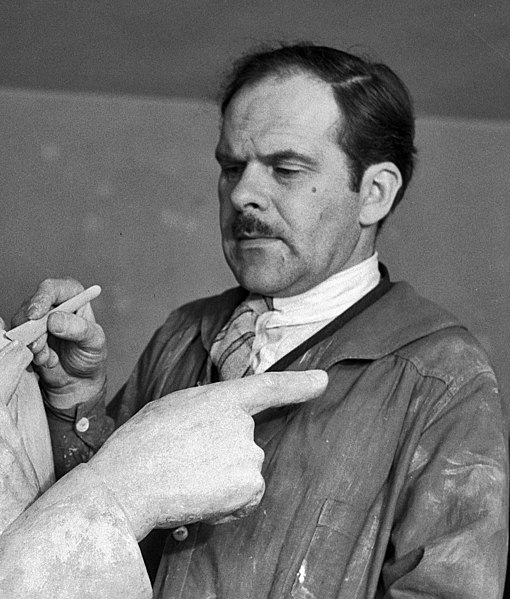Alexander Porfyrovych Archipenko was a Russian-American avant-garde artist of Ukrainian descent, sculptor, and graphic artist, active in France and the United States. He was one of the first to apply the principles of Cubism to architecture, analyzing human figure into geometrical forms.
Archipenko in 1935
La Vie Familiale (Family Life), 1912, height approx. 6 feet (1.8 m). Exhibited at the 1912 Salon d'Automne, Paris and the 1913 Armory Show in New York City, Chicago and Boston. Photograph from Comœdia Illustré (1912) of the original sculpture, later accidentally destroyed
Untitled, 1912, published in Action, Cahiers individualistes de philosophie et d'art, October 1920
Recherche de plastique, 1913. Exhibited at Erster Deutscher Herbstsalon, Berlin, 1913, an exhibition organized by Herwarth Walden (Galerie Der Sturm), including Metzinger, Delaunay, Gleizes, Léger, Marcoussis and Picabia
Cubism is an early-20th-century avant-garde art movement begun in Paris that revolutionized painting and sculpture, and inspired artistic movements in music, literature, and architecture. In Cubist works of art, the subjects are analyzed, broken up, and reassembled in an abstract form—instead of depicting objects from a single perspective, the artist depicts the subject from multiple perspectives to represent the subject in a greater context. Cubism has been considered the most influential art movement of the 20th century. The term cubism is broadly associated with a variety of artworks produced in Paris or near Paris (Puteaux) during the 1910s and throughout the 1920s.
Pablo Picasso, 1910, Girl with a Mandolin (Fanny Tellier), oil on canvas, 100.3 × 73.6 cm, Museum of Modern Art, New York
Pablo Picasso, Les Demoiselles d'Avignon, 1907, considered to be a major step towards the founding of the Cubist movement
Albert Gleizes, L'Homme au Balcon, Man on a Balcony (Portrait of Dr. Théo Morinaud), 1912, oil on canvas, 195.6 × 114.9 cm (77 × 45 1/4 in.), Philadelphia Museum of Art. Completed the same year that Albert Gleizes co-authored the book Du "Cubisme" with Jean Metzinger. Exhibited at Salon d'Automne, Paris, 1912, Armory show, New York, Chicago, Boston, 1913.
The "Cubists" Dominate Paris' Fall Salon, The New York Times, October 8, 1911. Picasso's 1908 Seated Woman (Meditation) is reproduced along with a photograph of the artist in his studio (upper left). Metzinger's Baigneuses (1908–09) is reproduced top right. Also reproduced are works by Derain, Matisse, Friesz, Herbin, and a photo of Braque.








